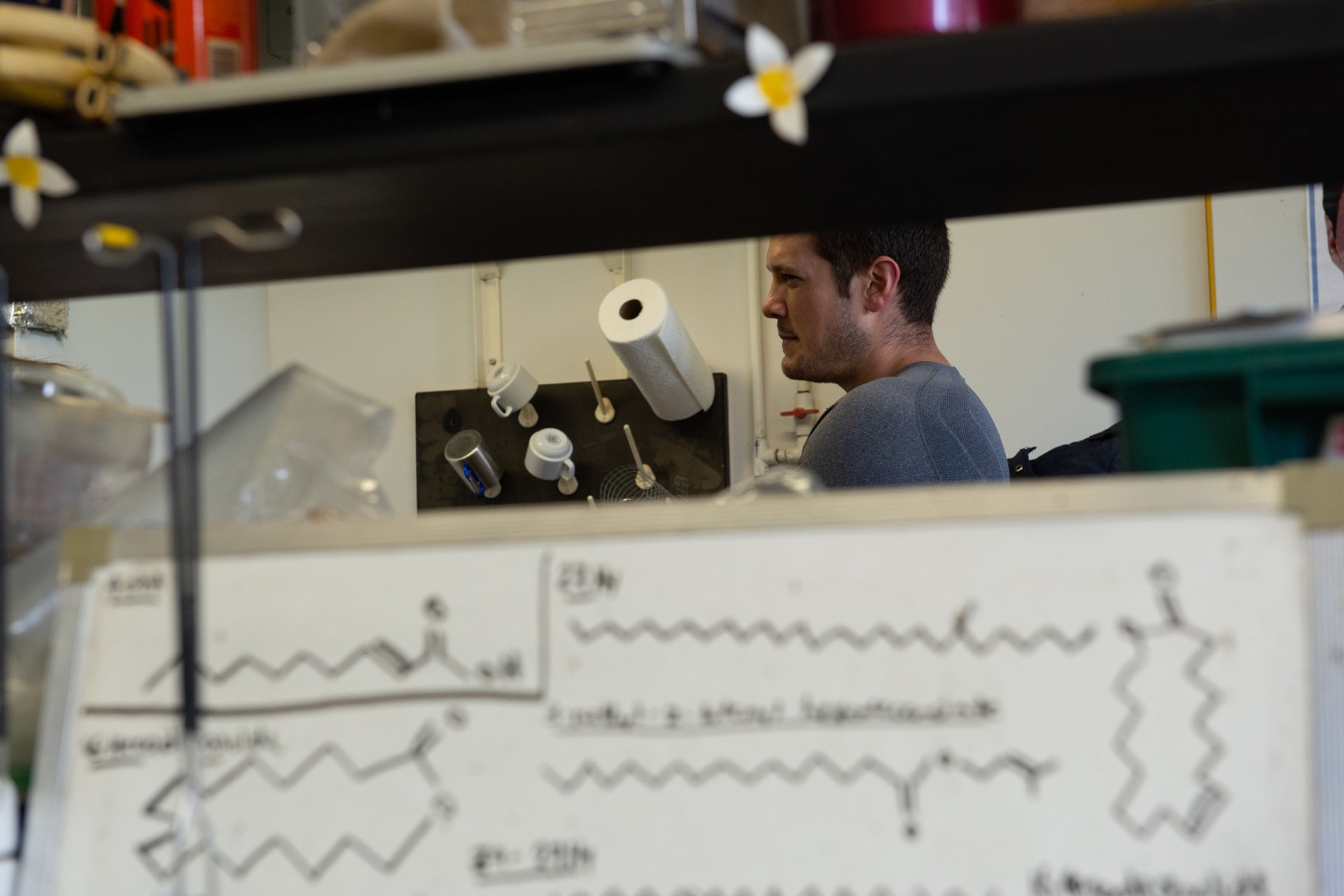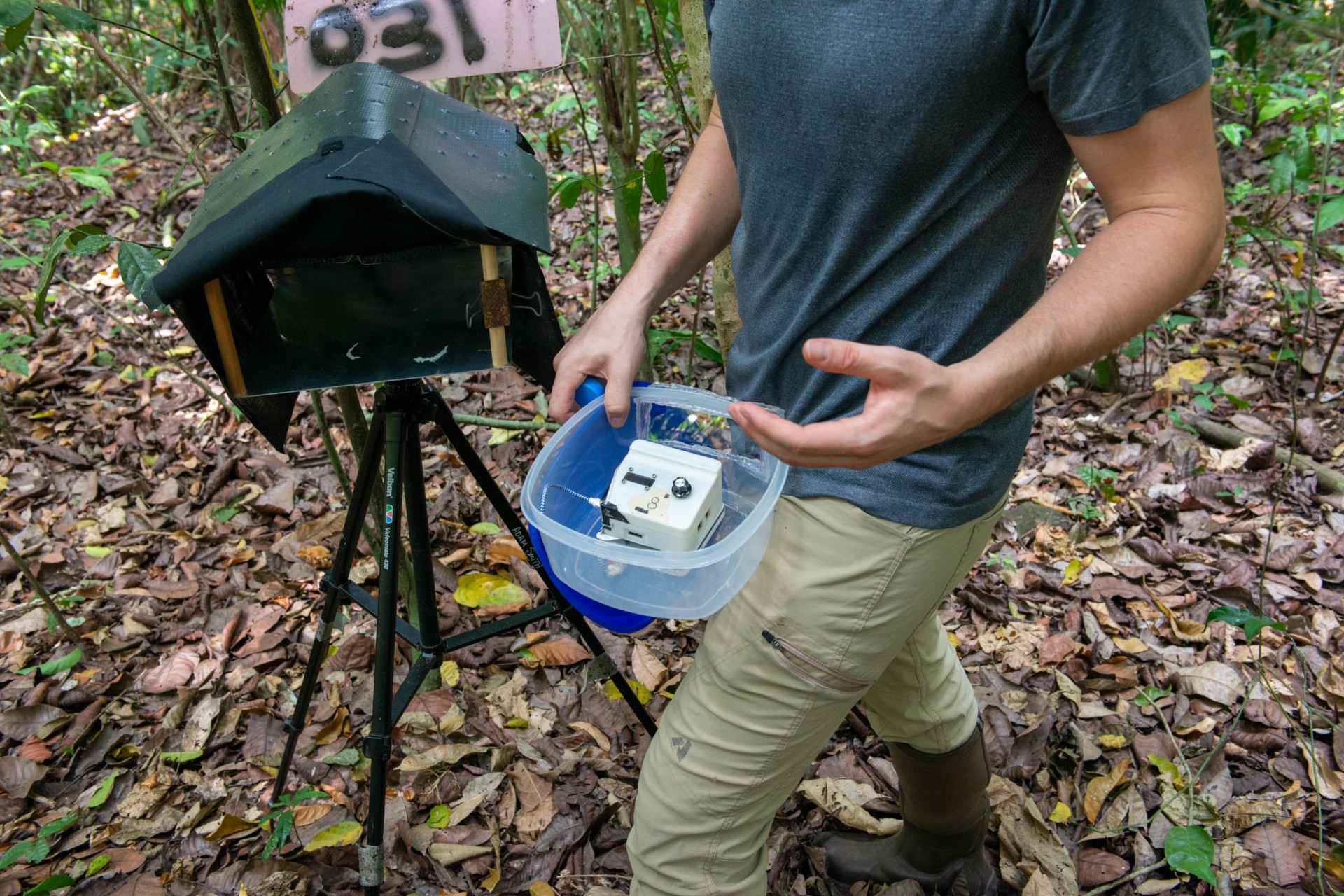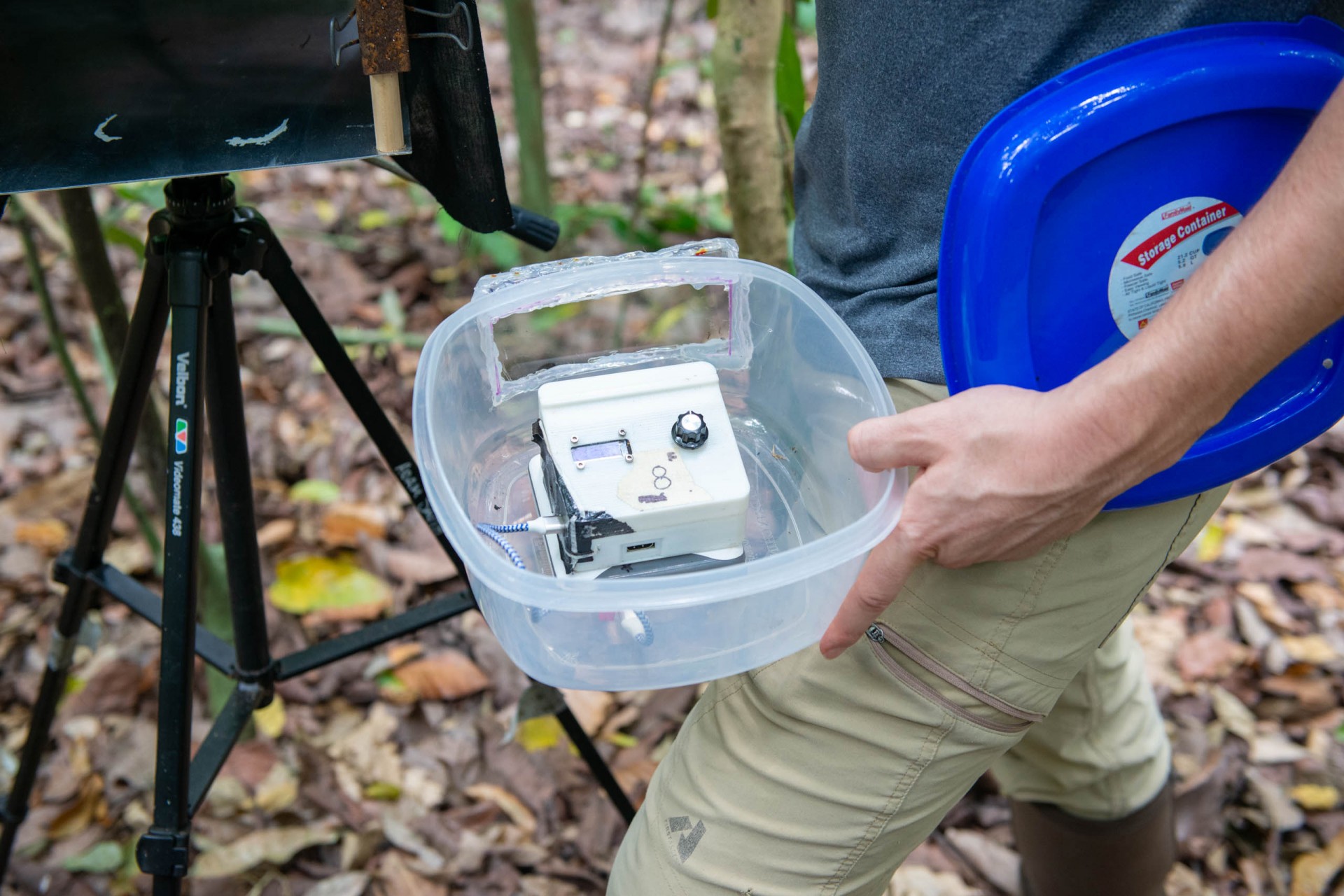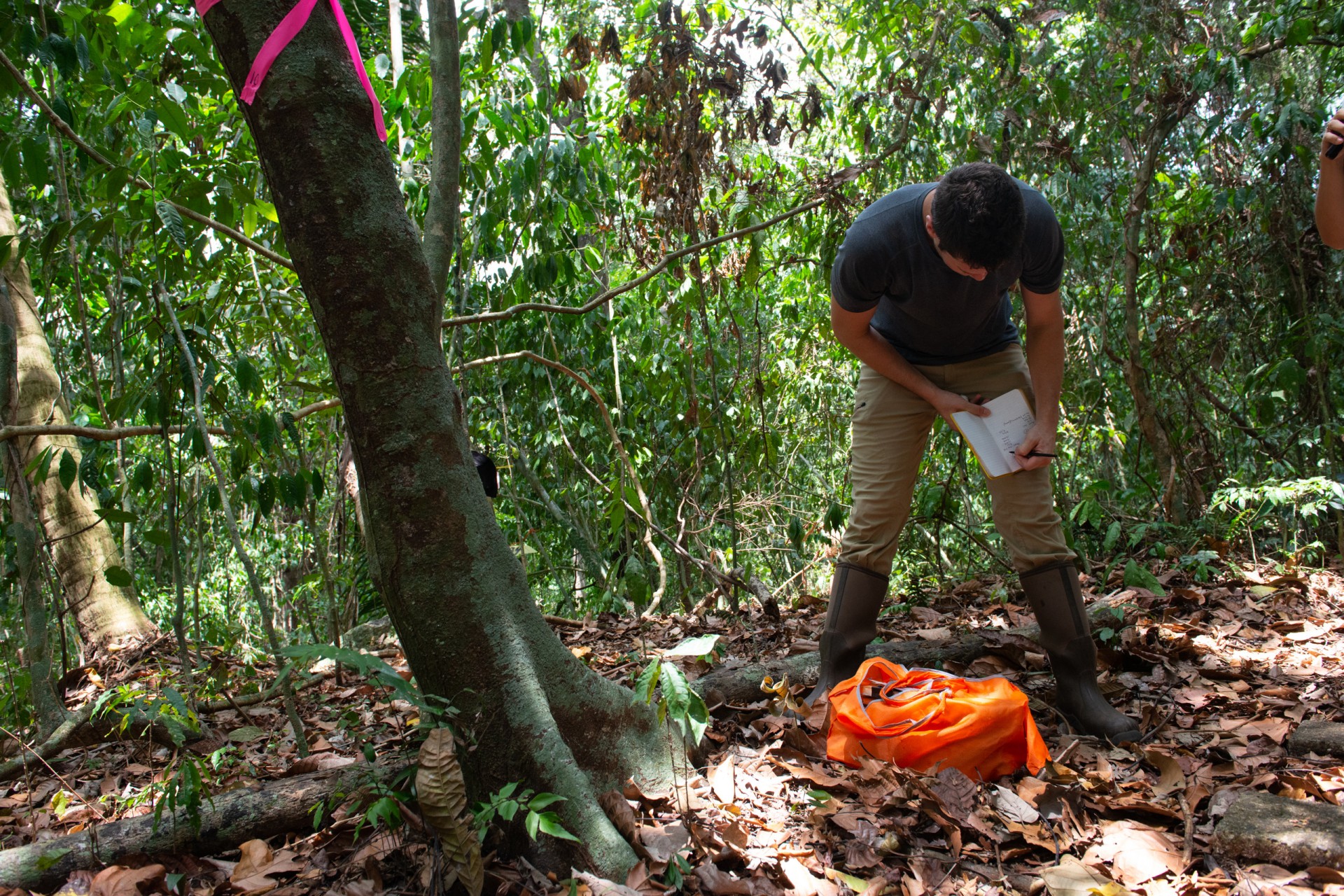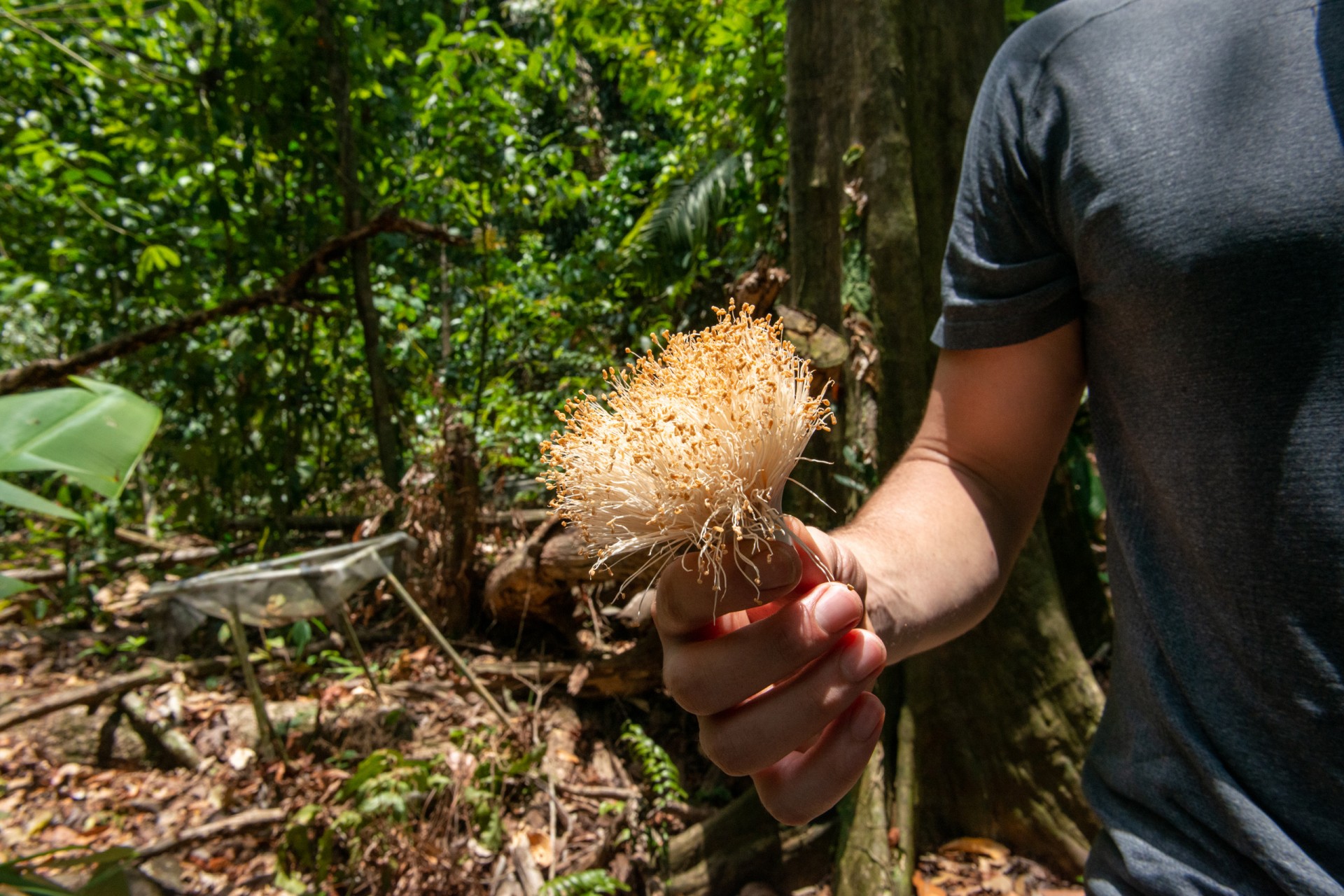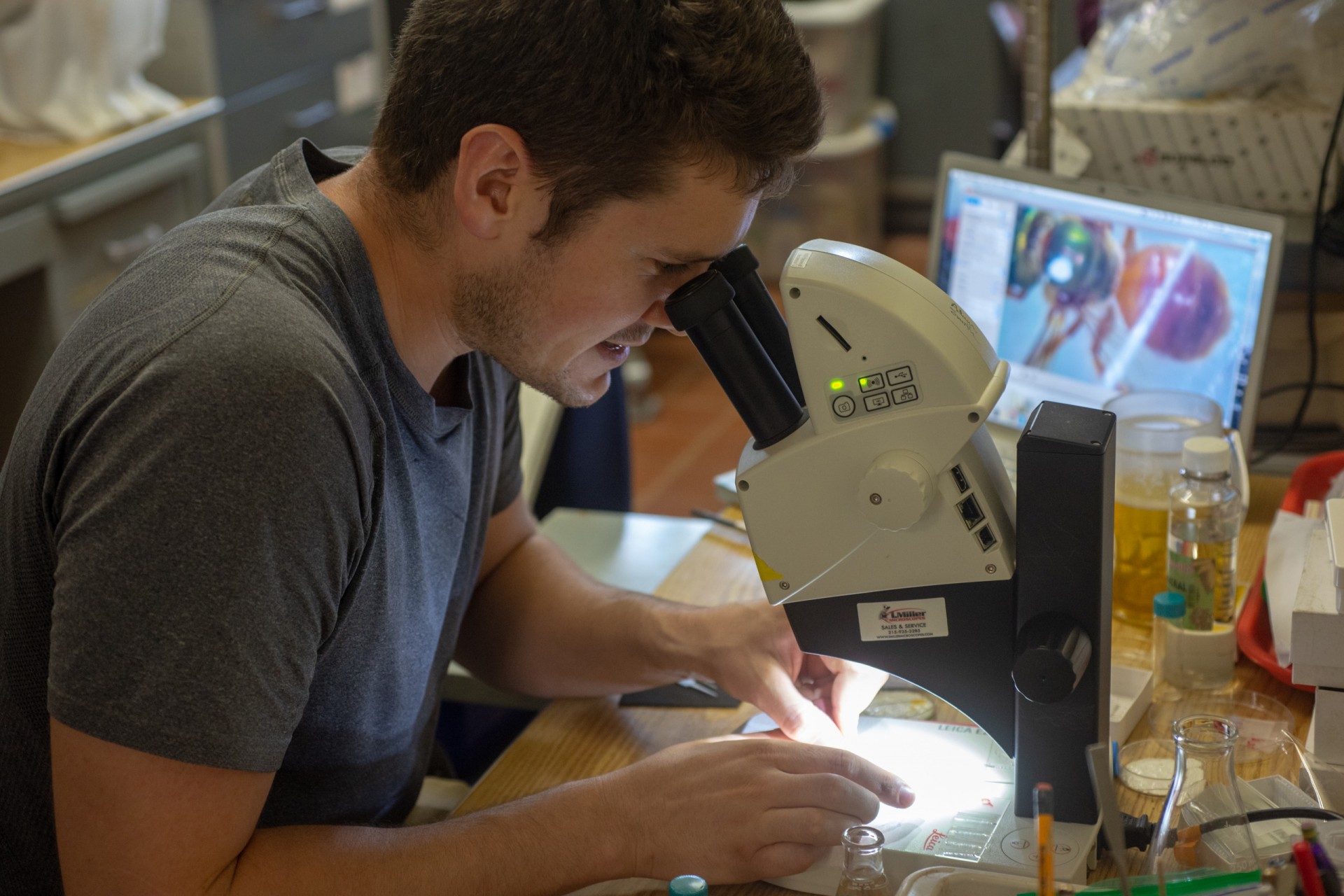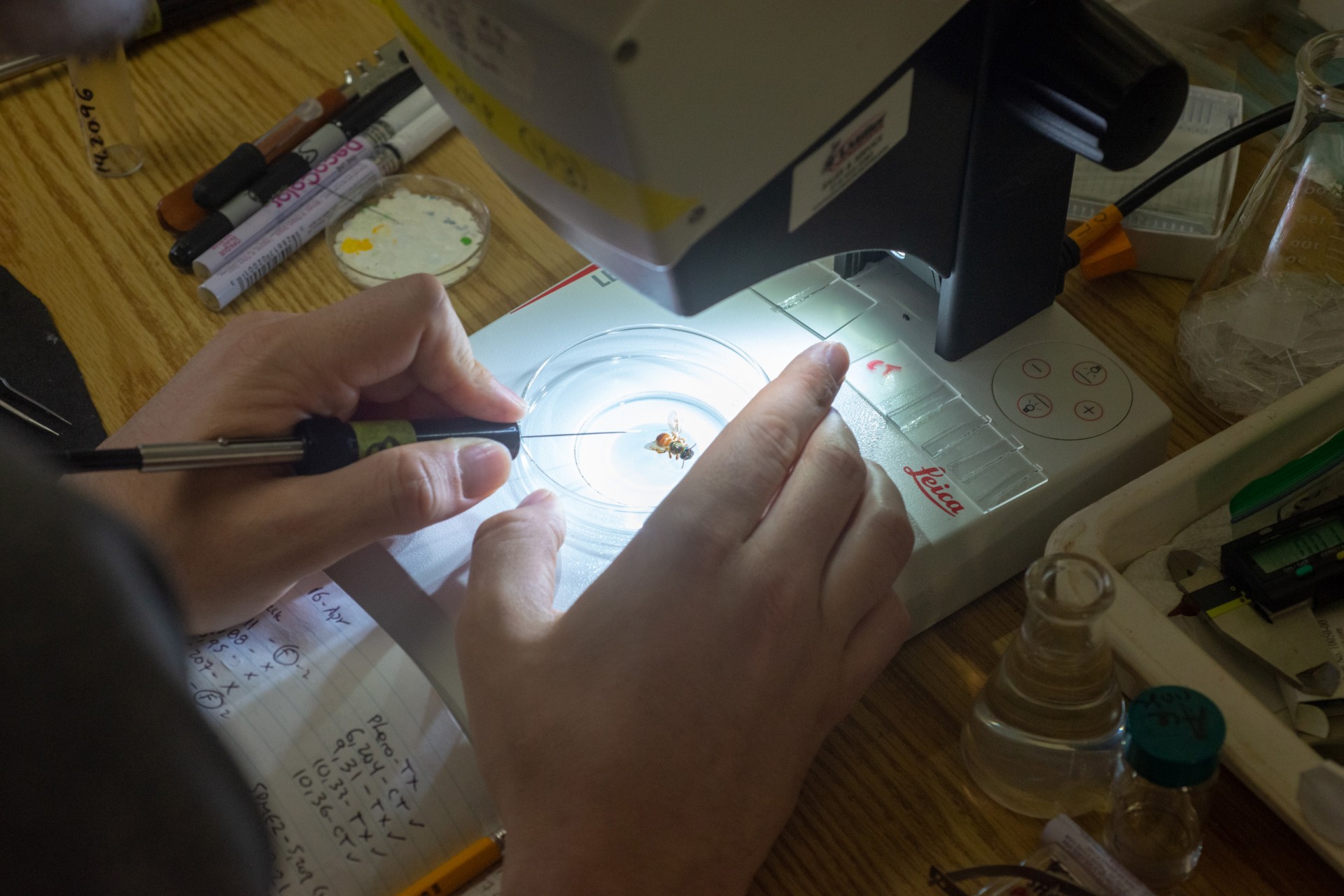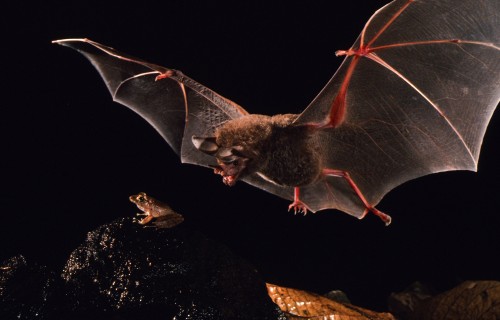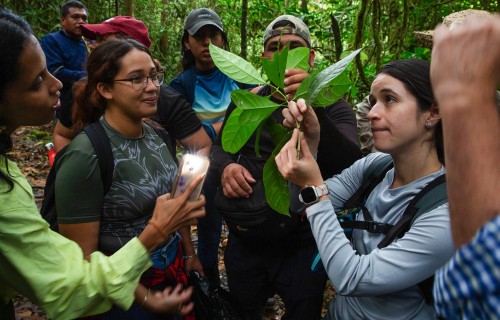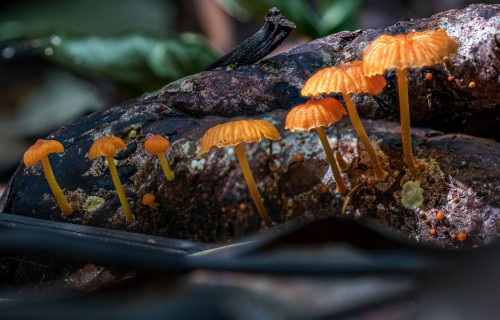Pseudoscorpions: Little guardians of crevices (public talk in Spanish)
Pheromone
talk
The queen gets to
keep her daughter
Barro Colorado Island
Why did some bee species become social, while the majority have remained solitary? On Barro Colorado Island, a bee that adopts both strategies interchangeably, may unlock the evolutionary origins of sociality in insects
When Callum Kingwell first set foot on the Smithsonian Tropical Research Institute’s Barro Colorado Island (BCI), most of his research experience had been learning about fish behavior in Canada’s west coast. As an evolutionary biology student at the University of British Columbia, in Vancouver, he had plenty of options to do marine research. However, he had a soft spot for insects. It wasn’t until his internship with STRI staff scientist, Bill Wcislo, in 2012, that he would delve into the world of bees and their behavior.
Seven years later, Callum is still a frequent visitor on BCI, where he is unveiling how Megalopta genalis bees communicate via pheromones or chemical signals and the role these chemicals may play in the evolution of social behavior in bees and other social insects. This is part of his doctoral work at the department of neurobiology and behavior at Cornell University.
Contrary to popular belief, only a minority of bee species are social, organizing around a queen bee and working for her while she reproduces. Most species have solitary nests. What has driven some to develop one reproductive strategy over the other is a mystery Callum aims to resolve with the Megalopta. They are a perfect species to work with to explore this question, because, within BCI, some are social and some are solitary.
First, he had to determine which pheromones were related to sociality. If you sampled a group of 50 Megalopta bees, you would probably find about 150 different chemicals, so this took a few years. Once identified, Callum worked with chemists from the University of California at Riverside and the University of Fukui in Japan, to produce the candidate pheromones synthetically and test their effects on bee physiology and behavior in the lab. After months of trials, he identified a subset of these candidate pheromones that caused workers to act submissively and to repress the development of their ovaries.
To explore their effect in the bee’s natural setting, Callum spent many hours in the forest, collecting larval bees from wild nests and taking them into the lab for incubation. Once they emerged, he placed them back in the forest in experimental nests. He then monitored how their pheromone levels changed as they developed as young bees until their first offspring emerged.
“A third of Megalopta bees have a solitary reproductive strategy: they either just produce male offspring, that leave the nest, or produce females but fail to recruit them as workers. The other two thirds become social by recruiting a daughter worker,” Callum explains.
While monitoring the bees from their earliest developmental stages until they reproduce, Callum has observed higher pheromone levels in bees that successfully recruit a worker and become queens, than in bees that fail to do so and become solitary. Pheromone levels seem to be a way of signaling fertility potential. Through increased production, the queen may convince her daughter to invest her time and energy in helping her highly-fertile mother to produce more offspring. The daughter then has to ponder whether assisting her mother to achieve full reproductive potential will be a more effective strategy than leaving the nest to have her own offspring.
In a mischievous version of this experiment, Callum forces some bees to change their reproductive strategy, by adding unrelated young females to the solitary bees’ nests. As for queen bees, he removes their workers.
“You can turn a queen into a solitary by removing her worker, but you can also turn a solitary into a queen, by introducing an unrelated young female. She is suddenly pressured to signal how fertile she is in order to recruit that potential worker, and we can observe what happens to her pheromone production,” he adds.
Callum also artificially boosts the pheromone levels in some nests. When a queen lays her first egg, and a female bee emerges, he takes them into the lab and measures their pheromone levels. He then swabs extra pheromones on the queen and returns them to their nest. He does this every other day for 10 days. Another set of nests act as the control group. Their pheromone levels are monitored too, but the queens don’t get an artificial boost.
“Normally within 10 days the worker decides if she stays,” says Callum. “I can then look at the effect of the queen pheromone boost on the worker’s ovary development.”
If the results in nature coincide with the lab results, the ovarian development of workers exposed to a fertility signal boost would be inhibited, consistent with a reproductive division of labor: one of the pillars of sociality.
For Callum, his research efforts are already uncovering a few interesting findings.
“It seems that queen-associated pheromones that influence worker behavior and physiology can be found even at this very early stage in the evolution of sociality, even though workers at this stage are fully capable of reproducing alone,” Callum suggests.
As Megalopta bees start to reveal the evolutionary origins of queen pheromones in social insects, an unanswered question remains: are their signals honest or are they misleading the workers into being non-reproductive? And if they’re not truthful –if the queen bees aren’t as fertile as their signals have led workers to believe– how does natural selection process this information?
Callum is hoping to tackle this in two ways. First, by taking samples of pheromone production in some bees and then tracking their lifetime reproductive outputs. This would allow him to directly test the link between the supposed fertility signals and the actual lifetime fertility of the bees. In another approach, he will analyze gene expression related to the production and reception of the fertility signals. If the signals are dishonest, the receiver genes of worker bees would be expected to rapidly change in order to escape their influence. In turn, the genes producing the signals in queen bees would be quickly adapting to continue manipulating the workers.
“If they do provide an honest signal of the benefits to being non-reproductive, they could potentially facilitate evolutionary transitions from solitary to social living. As the difference in potential fecundity of nestmates diverges, these pheromones offer a way for the nascent worker caste to detect that difference and respond to it in an adaptive way”, concludes Callum.

